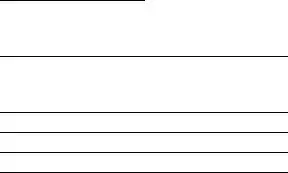What is a Letter Refund of Security Deposit?
A Letter Refund of Security Deposit is a formal communication from a landlord to a tenant, detailing the process of returning the tenant's security deposit after the end of a lease agreement. It provides information on the amount of the security deposit, any deductions taken, and the remaining balance to be refunded. This letter is typically sent after property inspection and before the final refund is issued.
Why do landlords send this letter?
Landlords send this letter to ensure transparency regarding the security deposit funds. It allows them to explain any deductions that may have been made, in accordance with the lease agreement and state laws. Clarity in communication helps establish trust between landlords and tenants, preventing potential disputes.
What details should be included in the letter?
The letter should include the following details:
-
The date the letter is issued.
-
The tenant’s name and current address.
-
A reference to the lease agreement, including the lease date.
-
The total amount of the security deposit.
-
A list of any deductions made from the deposit.
-
The remaining balance to be returned.
How are deductions for the security deposit determined?
Deductions from the security deposit are typically determined based on lease terms, property condition, and local laws. Common reasons for deductions include:
-
Damage to the property beyond normal wear and tear.
-
Unpaid rent or late fees.
-
Costs for cleaning or repairs necessary to restore the property to its original condition.
How long does a landlord have to return the security deposit?
The timeframe for returning a security deposit varies by state but is generally between 14 to 30 days after the lease ends. If deductions are made, landlords usually provide an itemized list explaining these deductions along with the remaining deposit. It is important for tenants to know the regulations in their state to ensure compliance.
What should a tenant do if they disagree with the deductions?
If a tenant disagrees with the deductions stated in the letter, they should first attempt to communicate with the landlord to resolve the issue amicably. This can include asking for clarification or disputing specific charges. If resolution cannot be achieved, seeking legal advice or assistance from a local housing authority may be necessary to explore further options.
Can a tenant expect interest on their security deposit?
Whether a tenant is entitled to interest on their security deposit depends on state laws. Some states require landlords to pay interest on security deposits, while others do not. It is essential for tenants to familiarize themselves with their local regulations to understand their rights.
What happens if the landlord does not return the deposit in time?
If a landlord fails to return the security deposit within the legally required timeframe, tenants may have legal recourse. They can potentially seek damages and may be entitled to the return of the full deposit, plus additional fines, depending on state law. Timely action is advised, as there may be specific procedures to follow to file a claim.
Is it necessary to provide a forwarding address?
Yes, it is advisable for tenants to provide a forwarding address to landlords to ensure they receive their security deposit promptly. A clear communication of the change in address can prevent delays and misunderstandings regarding the return of funds.
What can tenants do if they never received the refund letter?
If a tenant does not receive a refund letter after the lease ends, they should reach out to the landlord to verify the status of their security deposit. It is important to keep a record of all communications. If the landlord fails to respond or refuses to provide information, tenants may need to consult legal assistance to understand their rights and potential next steps.

